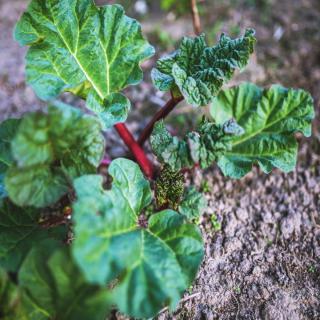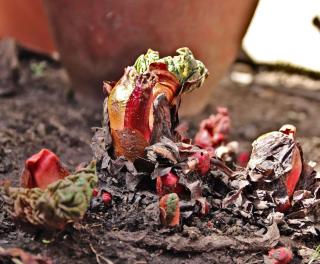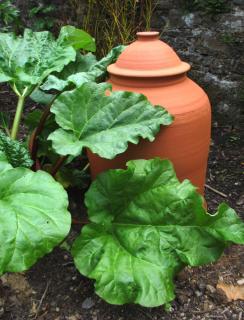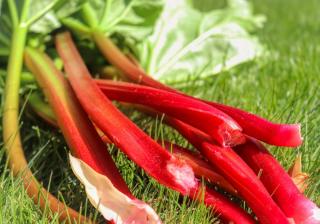

Rhubarb is an easy plant to grow and its harvest is often abundant.
Key Rhubarb facts
Name – Rheum rhaponticum
Family – Polygonaceae
Type – perennial
Height – 1 ⅓ to 3 feet (0.5 to 1 meter)
Exposure – full sun, part sun
Soil – rather rich and acidic
Foliage – deciduous – Harvest – spring/summer
From planting or preparing seedlings all the way to harvesting petioles, regular care should help you boost growth. Growing, care and recipes… here is all our advice.
Rhubarb is best planted in fall from rhizomes, but can also be planted in spring.
Since it takes up a lot of volume, keep a space that is separate from the vegetable patch, because if you don’t, it will quickly colonize the entire plot!
Rhubarb needs rich soil, and regularly adding organic fertilizer is a requirement for it to “prosper”.
 Two or three rhizomes planted 3 feet (1 meter) apart are more than enough to cover an entire family’s needs.
Two or three rhizomes planted 3 feet (1 meter) apart are more than enough to cover an entire family’s needs.If you wish to sow rhubarb, sow in spring or summer, preferably in nursery pots, and place them in the ground from September to March.

You can spur its growth, especially the first year, by offering each stem bunch 3.5 oz (100 g) of type 7-11-17 mineral or 5-7-7 organic fertilizer granules.
Tear the last petioles off in the first days of winter.
The rhizomes will enter dormancy, but they will surprise you anew in the first days of spring. Mulch can help retain soil moisture in summer.
Rhubarb is a plant that perspires a lot during summer because of its huge leaves. It requires dedicated watering.
Harvesting generally occurs twice a year, from April to September/October. Tender spring shoots are a favorite, they’re the most tender and least bitter.
Keep the wide leaves to prepare rhubarb tea to fight aphids and leaf-mining flies.
Every other year, you can “force” your rhubarb plant.
 end of January, clear any protective mulch from atop your rhubarb plant.
end of January, clear any protective mulch from atop your rhubarb plant.Forcing has two advantages: it triggers the plant to start sprouting earlier, and stalks are much sweeter.
However, you shouldn’t force the same clump two years in a row. Best practice is to grow 2 or 4 plants, so you can alternate which ones you force.
Rhubarb is native to Asia, and was only introduced in the West around two hundred years ago.
Today, it is used as a fruit when preparing jam or delicious rhubarb pies but in the botanical classification it is a vegetable.

It can be grown anywhere in Europe, but is more common in cool temperate climates.
Rhubarb is famous for its laxative properties.
Mineral-rich, with high phosphorus, magnesium, potassium and calcium content, rhubarb is a very good food supplement, especially to enhance digestion.
Many sweet-tooth recipes will lead you to appreciate this plant from your vegetable patch, and your preserves will definitely rejoice your family! One last thing to know: rhubarb leaves are excellent for your compost.